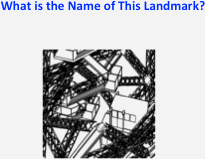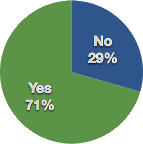THIAGI GAMELETTER:
June 2012
SERIOUSLY FUN ACTIVITIES FOR TRAINERS, FACILITATORS,
PERFORMANCE CONSULTANTS, AND MANAGERS.
TABLE OF CONTENTS
Masthead
Our mission statement, copyright notice, and cast
of characters.
Telephone Game
Surprising Sentence
A collaborative jolt.
Guest Gamer
An Interview with Elroye Jones
A leader in the field of leadership
training.
Structured Sharing
Lasting Impression Elevator
Pitch by Elroye Jones
A multipurpose presentation.
Jolt
When Less Is More
Spare the details.
Twitter
Thirty-Nine Tweets about Goal Setting
What's the goal for goals?
From Brian's Brain
How Creativity Works by Brian Remer
A link to the latest issue of Brian's
newsletter.
Scenario-Based Survey
It's All in the Name by Tracy Tagliati
Are you a student or a learner or a
participant?
Survey Results
Challenging participants by Tracy Tagliati
A summary of your responses.
Check It Out
Flesch-Kincaid Readability Test ( http://www.standards-schmandards.com/exhibits/rix/
)
How readable is your writing?
Masthead
THIAGI GAMELETTER:
SERIOUSLY FUN ACTIVITIES FOR TRAINERS, FACILITATORS,
PERFORMANCE CONSULTANTS, AND MANAGERS.
Mission
To increase and improve the use of interactive,
experiential strategies to improve human performance in an
effective, efficient, and enjoyable way.
Editorial Roster
 Author and Editor
: Sivasailam (Thiagi) Thiagarajan
Author and Editor
: Sivasailam (Thiagi) Thiagarajan
 Assistant Editor
: Raja Thiagarajan
Assistant Editor
: Raja Thiagarajan
Associate Editors: Jean Reese and Tracy Tagliati
Contributing Editors: Brian Remer
Editorial Advisory Board: Bill Wake, Matthew Richter, Samuel van den Bergh, and <type your name here>
Copyright Info
The materials in this newsletter are copyright 2012 by The
Thiagi Group. However, they may be freely reproduced for
educational/training activities. There is no need to obtain
special permission for such use as long as you do not
reproduce more than 100 copies per year. Please
include the following statement on all reproductions:
Reprinted from THIAGI GAMELETTER. Copyright © 2012
by The Thiagi Group, Inc.
For any other use of the content, please contact us (
thiagi@thiagi.com ) for permission.
Subscription Info
To sign up, or to donate and help us continue this
newsletter, please see the Online
Newsletter page on our website (
http://thiagi.com/pfp.html ).
Feedback Request
Thiagi believes in practicing what he preaches. This is an
interactive newsletter, so interact already! Send us your
feedback, sarcastic remarks, and gratuitous advice through
email to thiagi@thiagi.com . Thanks!
[Table of Contents]
Telephone Game
Surprising Sentence
Here's a challenge: Come up with a lengthy
sentence that contains intriguing twists and turns.
Here's the response:
Once upon a blue-moon day when I was swimming nonchalantly
in the Ganges River which was slowly meandering through a
rippling and sensual set of buoys anchored to the gooey mud
located at the bottom of an ancient slow-moving glazier that
flowed for unknown centuries at the center of a blue delta
and capsized many a ship that carried alien assassins who
were on their 87th secret rendezvous looking for some
innocent and attractive and young men returning from a
workshop on unarmed combat techniques for unmarried men who
can cook rice 17 different ways without boiling off their
little fingers or toes because that would not have been a
pretty way to treat one's own body parts—although it
could have been exciting to a masochist or to someone with a
Ph. D. in self-mutilation whose great grandfather probably
gargled with salt water while singing Nordic drinking songs
that has guttural lyrics and many….
If you thought I couldn't do that, neither could I.
I did not create this sentence, but only one half of it. My
friend Tracy Tagliati created the other half.
Purpose
To explore the requirements for—and outcomes
of—true collaboration.
Time
10 to 15 minutes
Supplies
Flow
Find a friend. Call her on the telephone
and invite her to play a fun game with you. Wait until she
finds a piece of paper and a pencil.
Explain the procedure. Tell her that the
challenge is to create the world's longest sentence. You and
your friend will take turns supplying two or three
words at a time to construct a meaningful—and
lengthy—sentence. Both of you will separately write
down the jointly created sentence to keep track of what is
happening.
Play the game. Invite your friend to
supply the first couple of words. Then supply your words.
Take turns to grow the sentence. Keep writing down the new
words, adding them to the sentence as the game
progresses.
Conclude the activity. Stop the activity
when you have used up about 3 minutes or run out of paper.
Ask your friend to read the sentence and have a good
laugh.
Debriefing
Okay, that was great fun, but what's the point?
This activity is a demonstration of true collaboration.
Here are the key features of such collaboration:
- There are no hidden agendas. You are not trying to
control the other person's contribution.
- The focus is on the process and not the result.
- No one dominates the activity. You take turns.
- Both of you own the final product. It is impossible to
figure out who contributed more.
- Both of you have equal status.
- Each person brings her own unique perceptions,
preferences, and experiences to the activity.
- You build upon what the other person offers.
- You listen actively. You have to be mindful of what is
happening every moment.
- You are spontaneous. If you begin to plan ahead, the
activity does not flow smoothly.
- The final product is unexpected and surprisingly
delightful.
- A playful approach results in you and your partner
reaching a flow state in which you feel that you can read
the other person's mind.
Of course, you can play the game in a face-to-face
situation. But the telephone call makes it more spontaneous
and fun. You can forget about writing down the sentence, but
then you will regret your inability to recall the brilliant
creation and impress your other friends.
[Add your feedback]
[Return to Table of Contents]
Guest Gamer
 Elroye Jones is a trainer
and facilitator for the New York City Department of
Transportation and an independent consultant. He designs and
conducts over 100 classroom training sessions each year. He
facilitates and trains leaders, managers and supervisors in
communicating on the job. He uses interactive games to
energize participants and for training content retention.
Elroye is a self-directed leader who believes that you must
be able to lead yourself before you can lead others. You can
reach Elroye at ejones6849@yahoo.com .
Elroye Jones is a trainer
and facilitator for the New York City Department of
Transportation and an independent consultant. He designs and
conducts over 100 classroom training sessions each year. He
facilitates and trains leaders, managers and supervisors in
communicating on the job. He uses interactive games to
energize participants and for training content retention.
Elroye is a self-directed leader who believes that you must
be able to lead yourself before you can lead others. You can
reach Elroye at ejones6849@yahoo.com .
An Interview with Elroye Jones
TGL: Elroye, what is your specialty
area?
Elroye: Leadership. I challenge managers,
supervisors and employees to open up communication with one
another and to develop practical strategies for use on the
job. I also coach trainers and conduct train-the-trainer
classes. This is my way of passing on what was given to
me.
TGL: How did you get into designing and using
games?
Elroye: I've trained on different topics and
different age groups and I keep getting pulled back to train
leaders. I regularly train on the topics of teambuilding,
performance management, new supervisor training, and
communication as a part of the leadership training that I
conduct.
My background in recreation taught me the value of using
games to instruct people of all ages. I regularly use
Jeopardy,
Tic-Tac-Toe, 20
Questions, and true-false quizzes to create
training exercises. I have designed
Jeopardy games to reinforce lectures
on DISC and used a DISC card game to increase the
participants' understanding of their communication styles. In
teambuilding classes, I use a drawing game to help managers,
supervisors, and employees understand the role communication
plays in leading and following.
When two fellow trainers attended the train-the-facilitator
workshop given by Thiagi and Tracy and showed me some
simulation games, I knew I had found the next level of
training I wanted to achieve. Since then I have incorporated
simulation games and activities into all the training classes
I conduct. As Thiagi would say, it's faster, cheaper, and
better.
TGL: How long have you been designing and
using games?
Elroye: I've been designing and using
training games since 1999.
TGL: Where do you use games?
Elroye: In classroom training, I use games to
spice up old training modules and to create entirely new
training programs.
TGL: How do your clients
respond?
Elroye: Clients respond positively to
simulation games and training activities. I recently helped a
men's group identify their goals by using a consensus game.
New supervisors were appreciative that the game allowed them
to interact with one another and to share their concerns in
the debriefings.
My ultimate biggest bang for private clients is instructing
them to communicate positive impressions. I help them develop
brief elevator pitches that are key to making lasting
impressions on anyone they meet. Now anyone can create
elevator pitches as a coaching or training activity using my
Lasting Impression Elevator Pitch
game.
TGL: How do your participants
respond?
Elroye: I use the Socratic method by asking
questions of the participants and involving them in
discussions. This type of interaction and a little humor goes
a long way to make my classes interesting. Nowadays, I start
with a game, get them interacting with one another, hit them
with Socrates during the debriefing, and before they know it
they are interacting in my class and loving every minute of
it.
After attending the games certification training with Thiagi
and Tracy, I conducted a
Train-the-Facilitator
class for the trainers I work with. I used games to train
them. They were so wrapped up in the game activity and the
interactive delivery style that they forgot to take a morning
break. They asked for more examples of jolts and literally
took over the flow of the session. One trainer used the
principles and procedures she learned in this session to add
innovative touches to her defensive driving class three days
later. She got on-the-spot rave reviews for the best defensive
driver training class the participants had ever attended.
TGL: What is the most embarrassing moment
you've had in conducting games?
Elroye: The final step for a game I set up
had four groups create pictures of their findings but no one
wanted to draw any pictures. I literally had to pull teeth to
get them to respond. In the end they enjoyed the exercise but
it taught me to take more time in the future to get the buy-in
for that kind of activity.
TGL: What advice do you have to newcomers
about interactive training?
Elroye: If you want to use training games,
sign up for a class and learn from an expert. Share your game
knowledge with other trainers on the job so they benefit and
will support your efforts to expand the use of games in
training. If you are an independent consultant, use
well-selected training games to send your client ratings
through the roof and to build your reputation as a
results-oriented trainer.
TGL: What types of games do you use most
frequently?
Elroye: I use textra games and structured
sharing activities the most. Textra games allow participants
to learn new material and structured shared activities allow
them to use their knowledge and experience to drill down into
the new material. Combining the two types of games increases
comprehension and retention in all my training classes. In
addition, jolts really provoke participants into serious
thinking in any training class.
TGL: What is your favorite
game?
Elroye: My favorite game is
Essence. I like the idea of
participants getting to the essence of a training topic by
summarizing it from 16 words to eight words and finally to
four words!
TGL: Who are your favorite game
designers?
Elroye: Thiagi is my all-time favorite game
designer. I first read about his game design in the 1999
Handbook of Human Performance
Technology.
TGL: What is your prediction about the future
of games?
Elroye: Simulations and games are the future
for classroom and online training. People are demanding
excitement and creativity in their training. They are voting
with their wallets not to hire dull boring lecturers. When the
training focuses on the participants (like interactive games
do), it's guaranteed they will be engaged, learn, and call you
back for more training.
[Add your feedback]
[Return to Table of Contents]
Structured Sharing
Lasting Impression Elevator
Pitch
by Elroye Jones
 How do you explain what you
do to someone you meet for the first time and make a lasting
impression? Being able to explain what you do may result in a
career spurt—or at least help you avoid some
embarrassment.
How do you explain what you
do to someone you meet for the first time and make a lasting
impression? Being able to explain what you do may result in a
career spurt—or at least help you avoid some
embarrassment.
Key Idea
Participants write a short pitch they can use to introduce
themselves to clients or new acquaintances or to make
unscheduled presentations. Later, they have the pitch
critiqued and improved using a three-part rating system.
What's a Lasting Impression Elevator Pitch?
A lasting impression elevator pitch is a brief presentation
that sums up what you do in as little time as it takes to
ride up on an elevator. The concept of an elevator pitch has
been around for decades. It has been frequently used by
executives, sales people, presenters, and motivational
speakers.
Purpose
Explain what you do on your job—and why you do
it—in an accurate, brief, and memorable fashion.
Handout
Lasting Impression Elevator
Pitch Form
Time
20 to 40 minutes.
Participants
Minimum: 2
Maximum: Any number
Best: 12 to 28
Flow
Brief the participants. Discuss the
importance of always being prepared to explain what you do
and making a lasting impression. Explain what a lasting
impression elevator pitch does.
Ask the participants to prepare their
pitch. Ask them to use the pitch form to write
down what they do. Give 5 minutes for this task. Warn all
participants to be ready to make their individual
presentations.
Pair up the participants. After
participants have completed writing their pitch, ask them to
pair up and present the pitch to each other. Ask the
participants to give feedback to each other using this
three-part rating system:
-
Believability: Does participant make
you feel that he or she is able to perform the job as
described in the pitch?
-
Clarity: Is the pitch clear and easy
to understand?
-
Delivery: Does the participant speak
well?
Repeat the process. Pair up with another
participant and share the Lasting Impression Elevator Pitch.
Give and receive feedback as before.
Debriefing
To maximize the learning outcomes from this activity,
conduct a debriefing discussion using these types of
questions:
- How did you feel about your Lasting Impression
Elevator Pitch?
- What happened when you presented your pitch to
others?
- What changes did you make to your pitch on the basis
of feedback from the others?
- What did you learn about yourself?
- What final changes will you make to your pitch before
using it in the real world?
Uses
The Lasting Impression Elevator Pitch can be used as a
Tagline, introduction to prospects, Email signatures,
beginnings of Business Plans, recruiting letters, Flyers,
Brochures, Business Cards, and all promotional material.
[Add your feedback]
[Return to Table of Contents]
Handout 1
Lasting Impression Elevator Pitch Form
Fill in your answers to the questions below to prepare your
pitch.
-
Attention. What problem do you
solve?
-
Interest. Why are you passionate about
solving the problem?
-
Competency. What qualifications do you
have for solving the problem?
- I am…
- I can…
- I have already done…
-
Action. What do you want the listener
to do?
[Add your feedback]
[Return to Table of Contents]
Jolt
When Less Is More
Have you ever heard the phrase, “It's hard to see the
forest through the trees”? If you have, you'll appreciate
how this jolt demonstrates the negative effects of giving
learners too much information.
Synopsis
Participants are asked to look at a slide of a detailed
image and asked to identify what they see. The room remains
silent, as no one is able to guess. Next, the participants
are asked to look at a second slide with a simplified
version of the previous image. This time the participants
quickly, correctly, and enthusiastically identify what they
see.
Purpose
To demonstrate that simplified communication is often
better than detailed communication.
Training Topics
- Communication
- Train the Trainer
- Business writing
- Email
- Design
Preparation
Copy the slides to your laptop computer. Connect to an LCD
projector and click through the slides to make sure they are
safely copied.
Participants
One or more.
Time
2 minutes for the activity.
3 minutes for the
debriefing discussion.
Flow
Project the first slide.

Ask the participants to identify the image. Most
will remain silent, and a few may make random guesses.
Project the second slide.

Ask the participants to identify the image. Everyone
will be able to correctly identify the image as that of
Eiffel Tower.
Debriefing
Point out that both images were of the same building. One
was just a simplified version of the other.
Continue the discussion by asking the types of
questions:
- How do you feel when you have to read a lengthy and
detailed email or to hear a long-winded
presentation?
- What do you notice happens to your ability to focus
your attention on the key points during these
situations?
- How does this relate to workplace
communications?
- How do you react to web pages that contain too much
information, policy manuals that are extremely detailed,
PowerPoint slides that are too busy, diagrams that contain
too many details?
Learning Points
Excessively detailed instructions or descriptions can cause
the recipient to feel confused and exhausted. This in turn
can negatively affect the learner's attitude and willingness
to listen or to participate in an activity.
Simplified messages that focus on the key elements are
better absorbed than large amounts of detailed
information.
Brief pieces of information sent periodically are better
absorbed than large amounts of information provided once a
year.
It is more effective to let the participants fill in the
blanks rather than to spell everything out.
Variation
Change the slide images to represent something relevant to
your company or topic.
Additional Resources
Rube Goldberg's website ( http://www.rubegoldberg.com/?page=gallery# ) . His
comedic drawings depict complicated inventions that perform
simple operations.
On Second Thought: Outsmarting Your Mind's
Hard-Wired Habits by Wray Herbert, available
here from Amazon. (Disclosure: We may receive a
little money if you buy the book from that link.)
[Add your feedback]
[Return to Table of Contents]
Twitter
Thirty-Nine Tweets about Goal Setting
- Much confusion about goal setting is due to the
ambiguity of the word. “Goals” means different things
to different people.
Preliminary Questions
- Before we begin specifying a goal, we must answer some
preliminary questions.
- A question to ask before goal setting: What is the
purpose of specifying the goal?
- Here are several “Who?” questions related to goal
setting: Who is the primary reader of your goal
statement?
- Another “Who?” question before goal setting: Who
should be involved in specifying the goal?
- Another “Who?” question before goal setting: Who
will be achieving the goal?
- Another “Who?” question before goal setting: Who
will benefit from achieving this goal? (John
McDermott)
- Another “Who?” question before goal setting: Who
may be adversely impacted by the goal? (John
McDermott)
- Another “Who?” question before goal setting: Who
will these goals serve? (Abdallah Aljarf)
- Another question to ask before goal setting: Should I
write my goals down?
- Another question to ask before goal setting: How much
detail should the goal statement contain?
- Another question to ask before goal setting: What is a
higher-level goal, mission, or value to which my goal must
be aligned?
- Another question to ask before goal setting: Should my
goals be made public?
- Another question to ask before goal setting: Is my
goal for short-term, medium-term, or long-term
achievement?
- Another question to ask before goal setting: How
formally should I specify my goals?
- Another question to ask before goal setting: Do my
goals relate to the final state of affairs or to
intermediate steps?
- Another question to ask before goal setting: How many
different versions of the goals do I need?
- Another question to ask before goal setting: How much
time should I spend in specifying the goal?
- Another question to ask before goal setting: Will I
revisit the goal and revise it? If so, when and
why?
- Another question to ask before goal setting: To what
type of intervention are the goals related: training,
motivation, feedback, job aids, ergonomics, work design,
OD…
- Another question to ask before goal setting: Is this a
one-time goal or a goal to be sustained?
- Another question to ask before goal setting: How do
these goals align with those from the C-suite? (Dick
Carlson)
- Another question to ask before goal setting: What is
the purpose of my goal setting activity?
What's the Purpose?
- There are different reasons for goal setting. The
nature of your goal statements depends on the purpose for
specifying goals.
- Abdallah Aljurf says that the purpose of a goal is to
achieve, or to evaluate, or to follow up.
- My SMART mentor Glenn suggests that goal setting sets
direction, clarifies expectations, establishes priorities,
provides focus, enables feedback …
- More purposes for goals from Glenn: encourage
planning, spur creativity, relieve boredom, increase
satisfaction, …
- More purposes of goal setting: raise productivity,
create momentum, select best strategy, obtain venture
capital, impress friends, …
- More purposes of goal setting: reduce variability,
suggest stop point, support coaching, align training,
…
- Benefits of goal setting: facilitate recognition,
stimulate competition, avoid meandering, prove your
seriousness, produce results, specify desirable state,
encourage inquiry, start a dialog…
- Michele Sliger suggests that goal setting breaks
something down into smaller pieces to prevent us from
being overwhelmed.
- Goal setting provides several benefits. Does it also
produce some undesirable outcomes?
- Mdoriean suggests that the thinking and strategizing
during goal setting is often a substitute for starting.
I've done that to reduce procrastination guilt.
- If we focus on the goal of counting basketball passes,
we tend to miss the gorilla. Goal focus prevents us from
seeing the big and complete picture.
- The best laid goals of mice and men frequently go
awry. Life is a series of improvisations.
- My life is a series of improvisations. Goal-setting
acts against my ability to improvise.
- In my professional work, my approach has always been
“Ready. Fire. Aim.” I find goals to be stifling and
dysfunctional.
- I am a great believer in playfulness. Spontaneous
playfulness is the opposite of goal-setting.
- Experts diagnose my problems with goal setting as
being caused by my INFP personality type. I don't know
what it means but it sounds cute.
[Add your feedback]
[Return to Table of Contents]
From Brian's Brain
How Creativity Works
by Brian Remer

Does caffeine enhance creativity? What makes cities 15% more
productive than rural areas? Why are you likely to be more
creative if your cubicle is near the break room? Brain
science, social science, and the way groups think all converge
in this issue as we explore the book Imagine: How
Creativity Works by Jonah Lehrer. Power
Tip: For a higher output of ideas, bend the rules of
brainstorming to incorporate critique.
Read more in the May 2012 issue of Firefly News
Flash: http://www.thefirefly.org/Firefly/html/News%20Flash/2012/May%202012.htm
.
[Add your feedback]
[Return to Table of Contents]
Scenario-Based Survey
It's All in the Name
by Tracy Tagliati
 What word do you use to identify the people
who attend your training sessions? Some people think that
choosing the correct word may make a difference in the
behavior of the people who attend training sessions.
What word do you use to identify the people
who attend your training sessions? Some people think that
choosing the correct word may make a difference in the
behavior of the people who attend training sessions.
Poll Question
Which of the following words do you prefer to use for
people who attend your training sessions?
- Participant
- Attendee
- Learner
- Student
- Delegate
- Registrant

(The poll opens in a new window.)
Open Question
What word do you prefer to use for the people who attend
your training sessions? Why do you prefer this word?

(The survey opens in a new window.)
You may include your name along with your response, or if
you prefer, keep it anonymous.
[Add your feedback]
[Return to Table of Contents]
Survey Results
Challenging participants
by Tracy Tagliati
 Last month we asked how you manage
participants that challenge each other during a training
session.
Last month we asked how you manage
participants that challenge each other during a training
session.
When this happens to Thiagi, he uses it as an opportunity to
facilitate a lively activity called Shouting Match. We asked
you if you would use this technique. Here's how you
responded:

(Percentages
reflect 34 votes received by May 30, 2012.)
Yes: 71% (24/34).
No: 29% (10/34).
We also asked, What are some of the techniques you use to
manage participants who excessively challenge the statements
of the others?
Here were some of your responses:
Response #3) I'll ask the person to explain his/her point
and how he/she can implement it. If this doesn't work, I'll
use the Shouting Match activity.
If time is a factor, I'll park it in the Parking Lot &
come back to it later.
If all fails, I'd talk to the person offline and find out
if he/she has an issue with a person or group.
Response #2) I believe that participants are adults and
also very busy. Therefore, if they see it fit to spend time
debating a point, it must matter to them a great deal. I
prefer to ask direct questions to get to the “real” reason
behind the challenge, while asking other participants to
help us resolve this. I find this most helpful. Reasons that
are deep often come to the surface and the challenger feels
listened to.
Thanks to those of you who contributed.
[Add your feedback]
[Return to Table of Contents]
Check It Out
As an ex-teacher (and learner) of English as a second
language, I am always curious about the readability level of
the things I write.
I took the Flow section of the
Surprising Sentence activity earlier
in this issue, and computed its Flesch-Kincaid Reading Ease
score. It got a score of 63. The higher the score, the easier
the text is to read. Most comic books score around 90 and
legal documents score around 10. The Flow section
also scores at the grade level of 7, indicating that it is
suitable for seventh grade students in the US classrooms.
Just for the fun of it, I rewrote this section at a higher
level of reading difficulty. Here's the modified version:
Call a friend or an acquaintance on the telephone and
invite that person to participate in a recreational
activity. Instruct the other person to retrieve appropriate
writing materials and tools.
Inform of the other person of the objective of the
activity: To attempt to construct an extremely lengthy
sentence. You and the other player will alternatively
contribute two or three words to co-create a
meaningful—albeit elongated—sentence. Both of
you will separately inscribe the jointly created sentence to
monitor the progress of the activity.
Instruct the other player to disclose the first two or
three words. Then announce the words that you want to
append. Continue by contributing additional words to be
attached to the sentence. Constantly extend the sentence and
keep track of its progress.
Conclude the activity when you have consumed approximately
3 minutes. Ask your friend to read the compound-complex
sentence that you have co-created. You will most likely find
it amusing.
This version scores 29 in the Reading Ease scale. (Remember
lower numbers indicate greater difficulty of the text.) Its
grade level comes out as 12.
You can test the readability of the things you write. All you
have to do is to copy your writing to a text box in this
online program: http://www.standards-schmandards.com/exhibits/rix/
.
Once you have figured out your readability, try to see if you
can simplify (or complicate) your language.
For more information about the Flesch-Kincaid readability
test, review the Wikpedia explanation: http://en.wikipedia.org/wiki/Flesch%E2%80%93Kincaid_readability_test
.
[Add your feedback]
[Return to Table of Contents]
 Author and Editor
: Sivasailam (Thiagi) Thiagarajan
Author and Editor
: Sivasailam (Thiagi) Thiagarajan Assistant Editor
: Raja Thiagarajan
Assistant Editor
: Raja Thiagarajan Elroye Jones is a trainer
and facilitator for the New York City Department of
Transportation and an independent consultant. He designs and
conducts over 100 classroom training sessions each year. He
facilitates and trains leaders, managers and supervisors in
communicating on the job. He uses interactive games to
energize participants and for training content retention.
Elroye is a self-directed leader who believes that you must
be able to lead yourself before you can lead others. You can
reach Elroye at
Elroye Jones is a trainer
and facilitator for the New York City Department of
Transportation and an independent consultant. He designs and
conducts over 100 classroom training sessions each year. He
facilitates and trains leaders, managers and supervisors in
communicating on the job. He uses interactive games to
energize participants and for training content retention.
Elroye is a self-directed leader who believes that you must
be able to lead yourself before you can lead others. You can
reach Elroye at  How do you explain what you
do to someone you meet for the first time and make a lasting
impression? Being able to explain what you do may result in a
career spurt—or at least help you avoid some
embarrassment.
How do you explain what you
do to someone you meet for the first time and make a lasting
impression? Being able to explain what you do may result in a
career spurt—or at least help you avoid some
embarrassment.


 What word do you use to identify the people
who attend your training sessions? Some people think that
choosing the correct word may make a difference in the
behavior of the people who attend training sessions.
What word do you use to identify the people
who attend your training sessions? Some people think that
choosing the correct word may make a difference in the
behavior of the people who attend training sessions.

